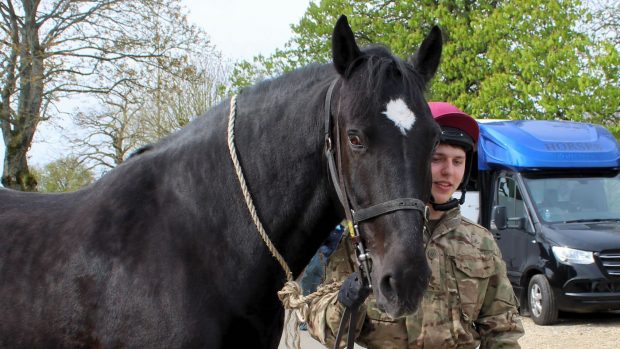The sport of eventing has undergone massive changes in the past 50 years. In audio and video clips supporting a virtual rebuild of the course from 50 years ago, event director Hugh Thomas and others talk through the four different phases on cross-country day, highlighting the evolution the sport has experienced...
“Back in 1969, the cross-country day was known as the ‘speed and endurance day’, so called because of the four phases involved — Phase A (roads and tracks), Phase B (steeplechase), Phase C (roads and tracks) and Phase D (cross-country),” explains event director Hugh Thomas.
“It was a very different day to what we see today; Phase A, the roads and tracks, acted very much as a warm-up before Phase B, the steeplechase. More roads and tacks followed in Phase C, before the vet inspection in the 10-minute box ahead of Phase D, the cross-country.
“The only phase that still functions today [in modern-day eventing] is the cross-country phase. There was also a very different scoring system back then, with riders able to gain maximum bonus points [for coming in under a certain time]. Not long after the 1969 Badminton, the FEI changed that scoring system. There were no more bonus points, which made it much easier to understand.”
‘A true endurance test’
Former event rider Judy Bradwell — who is now a top trainer and was the first female president of the ground jury at Badminton, having also ridden round the three-day event — reflects on how the sport has changed over the years.
“The main difference between now and then is that we didn’t do nearly as much in the cross-country warm-up back then, because we had the road and tracks and steeplechase to warm our horses up,” says Judy.
“In those days we also carried weight [lead in weight cloths], the weight was set at 11st 11Ib, and we didn’t rely on studs either — I’m not even sure we had studs back then,” she adds. “A three-day event was a true endurance test for both horse and rider.”
Hugh compares the steeplechase speed to a “slow point-to-point”.
“The steeplechase course comprised four or five brush fences, jumped twice,” says Hugh. “Sometimes we would see falls on the steeplechase, but back then there were ‘penalty zones’ — on the cross-country too — if something happened outside the penalty zone you couldn’t be penalised. The penalty zone extended 20 metres after the fence and 10 metres before it, but the concept was abolished in the late 1980s.”
‘Well designed for horse welfare’
The 10-minute box was used for horses to refresh after Phases A, B and C ahead of the final cross-country element, and where the horses received a check-over by the team of vets.
Bill Bush was a member of the horse inspection team in the 10-minute box for 25 years at Badminton.
“As a horse approached from Phase C, the roads and tracks, we would look at them and see how they were trotting in. If the horse looked particularly tired, we would wait for the vets to check their heart rate, before making a decision on whether or not they were okay to go across country,” explains Bill.
“Our job was to ensure the horses were well, fit and strong enough to go round the final phase.”
Hugh adds: “Phase C, the roads and tracks, was designed for horses to wind down following the steeplechase and recover their breath, so that when they came into the 10-minute box they could rest and start the cross-country in good shape. The sport has always been well designed for horse welfare — it was not any more strenuous for the horses back then compared to today.”
‘Flimsy timber’
Eventing has witnessed an evolution over the years, with the change from a long to short format the biggest of them all.
“The cross-country test was easier back then, it wasn’t as complicated,” says Hugh. “It was just as big, but there were no angles, corners or narrow fences, for example.”
The 1969-winning rider, Richard Walker, adds: “Nowadays, the construction of the fences across country allows riders to be more daring in the saddle because they are so well built and attractive.
“Back then, the fences were upright and built with flimsy timber. Now, they have pleasant groundlines and riders can attack the fences more freely. I would like to have ridden some of my past horses around the modern-day courses.”
Click here to view the full audio and videos from the archive, courtesy of the CrossCountry App.
For all the latest news analysis, competition reports, interviews, features and much more, don’t miss Horse & Hound magazine, on sale every Thursday.




